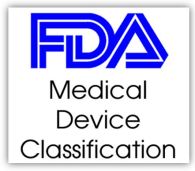FDA BRIEF: Week of July 31, 2017


SAFE PILLOW
Safe Obstetrics Systems, Ltd
INDICATION FOR USE: To elevate the fetal head and facilitate delivery of the fetus in
women requiring a Caesarean Section at full dilation or those requiring a Caesarean
Section after a failed instrumental vaginal delivery. Fetal Pillow is indicated for use at a
gestational age ≥37 weeks.
REG PATHWAY: De Novo request
- Regulation Number: 21 CFR 884.4350
- Regulation Name: Fetal head elevator
- Regulatory Classification: Class II
- Product Code: PWB
GENERIC DEVICE TYPE: Fetal head elevator
- prescription device consisting of a mechanism that elevates the fetal head to facilitate delivery during a Caesarean section
RISKS AND MITIGATIONS:
- Adverse tissue reaction: Biocompatibility evaluation
- Infection: Sterilization validation, Shelf life testing, Labeling
- Fetal injury due to device failure: Non-clinical performance testing, Shelf life testing, Labeling
- Maternal injury due to device failure: Non-clinical performance testing, Shelf life testing, Labeling
- Use error: Labeling
SPECIAL CONTROLS:
- Biocompatibility, Performance data, Non-clinical performance data, Labeling

Quantitation of Organophosphate Metabolites in Urine by LC/MS/MS
Centers for Disease Control and Prevention (CDC)
INTENDED USE/INDICATION FOR USE: Quantitation of specific organophosphate metabolites by LC/MS/MS. The device system includes organophosphate metabolite calibrators to calibrate the system and organophosphate metabolite controls for quality control monitoring of the system. This device is intended for use in a single laboratory to detect and measure the concentration of specific
organophosphate metabolites in human urine from individuals who have signs and
symptoms consistent with cholinesterase poisoning. The data obtained by this
device will be used following an exposure or suspected exposure event to confirm
exposure, identify the causative agent, and distinguish exposed from the
unexposed patients.
REG PATHWAY: De Novo request
- Regulation Number: 21 CFR 862.3652
- Regulation Name: Organophosphate Test System
- Regulatory Classification: Class II (special controls)
- Product Code: PDY
GENERIC DEVICE TYPE: Organophosphate test system
- intended to measure organophosphate metabolites quantitatively in human urine from individuals who have signs and symptoms consistent with cholinesterase poisoning. The data obtained by this device is intended to aid in the confirmation and investigation of organophosphate exposure
DEVICE DESCRIPTION:
- Internal standards for calibrators and quality control materials
- Solid phase extraction cartridge initially used to extract metabolites
- Separation and analysis on a tandem mass spectrometer and HPLC system
PERFORMANCE CHARACTERISTICS:
- Analytical Performance: Precision/Reproducibility, Linearity/assay reportable range, Traceability, Stability, Expected values, Detection limit, Analytical specificity
RISKS AND MITIGATIONS:
- False Positive, False Negative, Public Health Risk from Incorrect Test Results: Limited distribution, analytical testing
SPECIAL CONTROLS:
- Limited distribution to laboratories with experienced personnel
- Analytical testing for performance characteristics


STELLAREX 0.035” OTW Drug-Coated Angioplasty Balloon
Spectranetics Corporation
INDICATION FOR USE: For percutaneous transluminal angioplasty (PTA), after appropriate vessel preparation, of de novo or restenotic lesions up to 180 mm in length in native superficial femoral or popliteal arteries with reference vessel diameters of 4-6 mm
REG PATHWAY: PMA
- Classification: III
- Device Procode: ONU
DEVICE DESCRIPTION:
- Sterile, single-use, over-the-wire (OTW) device/drug combination product
- Base PTA Catheter: Percutaneous transluminal angioplasty balloon catheter uses mechanical force of balloon expansion across a lesion to establish patency
- Drug Coating: Paclitaxel incorporated in an excipient, to serve as an adjunct to the mechanical action of balloon angioplasty and assist in maintaining long term vessel patency post-procedure
EFFECTIVENESS:
- Prospective, randomized, multi-center, singleblind study, Stellarex 035 DCB vs. standard balloon angioplasty (PTA)
- Primary effectiveness endpoint: Primary patency at 12 months
- 76.3% in the DCB group vs. 57.6% in the PTA group (p=0.003)
- Secondary effectiveness endpoints, including target lesion revascularization (TLR) showed favorable results
SAFETY:
- Primary Safety Composite: 12-month freedom 92.1% (DCB) vs. 83.2% (PTA), p=0.0246
- No significant safety signal on rare or long-term adverse device or drug effects.
TaqPath™ Zika Virus Kit (ZIKV)
Thermo Fisher Scientific
INDICATION:
Real-time RT-PCR test intended for the qualitative detection of RNA from the Zika virus in serum and urine (collected alongside a patient-matched serum specimen) from individuals meeting CDC Zika virus clinical criteria (e.g., clinical signs and symptoms associated with Zika virus infection) and/or CDC Zika virus epidemiological criteria (e.g., history of residence in or travel to a geographic region with active Zika transmission at the time of travel, or other epidemiologic criteria for which Zika virus testing may be indicated), by laboratories in the US certified under CLIA
REG PATHWAY: Emergency Use Authorization
DEVICE DESCRIPTION: Lyophilized real-time reverse transcription polymerase chain reaction (rRT-PCR) assay for the qualitative detection of RNA from Zika virus in human
serum, urine (collected alongside a patient-matched serum specimen), and other authorized specimen types
Image Credit: Safe Obstetrics Systems, CDC, Spectranetics
